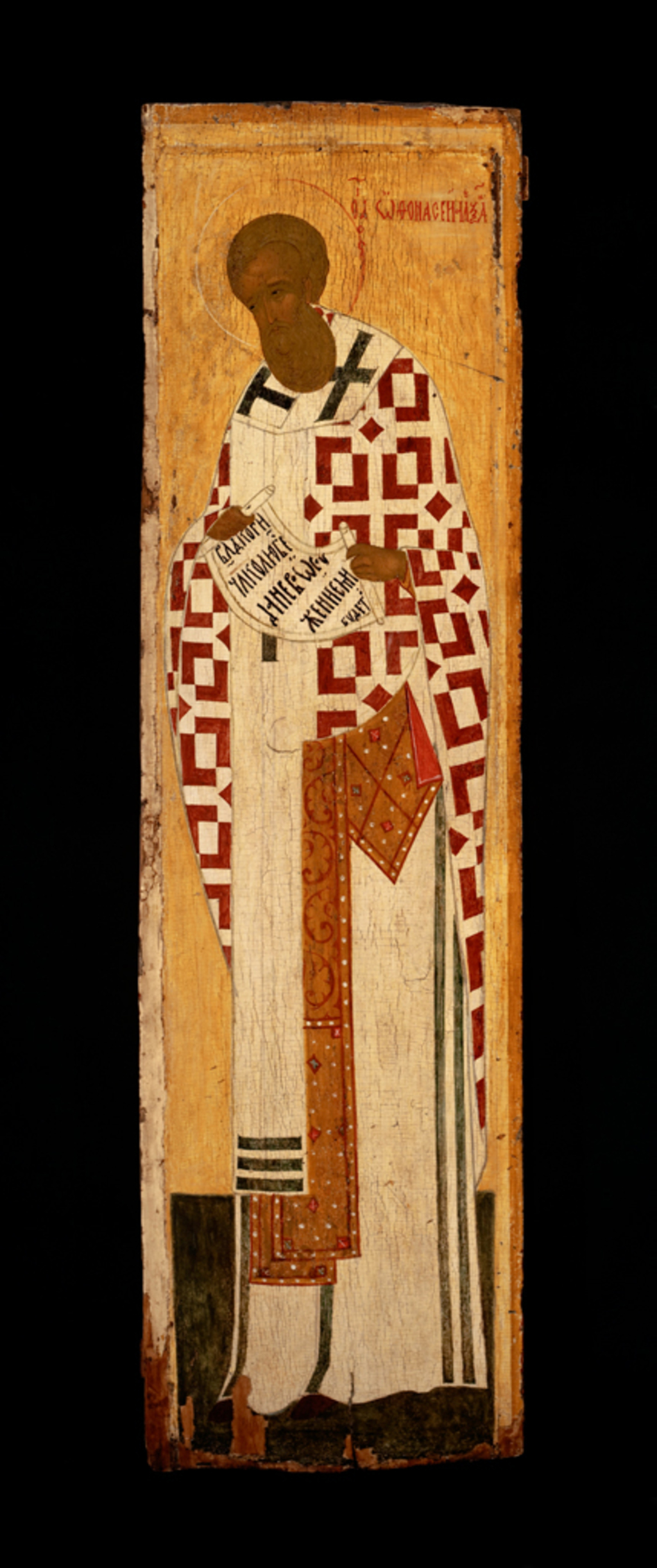At the end of the 15th century, Dionisiĭ, who trained in the Novgorod region of what is now Russia, moved to Moscow where he became one of the most prominent panel painters. Under his influence, icon painters abandoned all allusions to the physical reality of the earthly world. The dramatically vertical dimension of this depiction of Saint Athanasius and the ornamental abstraction of his ecclesiastical garments combine to dissolve the human figure entirely, allowing the saint—in the eyes of Russian Orthodox viewers of the era—to reach the height of spirituality. A comparison of the Menil’s Saint Athanasius with fresco cycles known to be completed by Dionisiĭ and his sons demonstrates that the painter of this icon was intimately familiar with his work. The icon’s flatness, elongation, unbroken contour lines, and above all the ornamentation of the two stoles (ceremonial sashes) all have numerous counterparts in Dionisiĭ’s work. Because only a handful of works are securely attributed to Dionisiĭ, however, it is not possible to identify the painter more precisely than as coming from his workshop.


